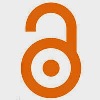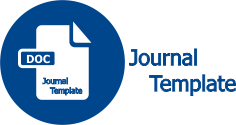- Focus and Scope
- Section Policies
- Peer Review Process
- Publication Frequency
- Open Access Policy
- Archiving
- Publication Ethic
- Info Charger
- Plagiarisem
Focus and Scope
Chemistry Education Review mempublikasikan artikel hasil penelitian bidang studi pendidikan kimia, yang berhubungan dengan belajar dan pembelajaran kimia, teori dan praktik pendidikan kimia, pengembangan perangkat dan materi pembelajaran kimia, pendidikan guru kimia, dan kegiatan lainnya yang relevan. Chemistry Education Review terbit dua kali dalam setahun yaitu bulan September dan Maret
Section Policies
Articles
Editorial
Peer Review Process
Peer-review is the system used to assess the quality of a manuscript before it is published. Independent researchers in the relevant research area assess submitted manuscripts for originality, validity and significance to help editors determine whether the manuscript should be published in their journal. You can read more about the peer-review process here.
Chemistry Education Review (CER) operates a Double-blind peer-review system, where not reviewers are aware of the names and affiliations of the authors, but the reviewer reports provided to authors are anonymous Publication of research articles by Journal Chemistry Education Review (CER) is dependent primarily on their scientific validity and coherence as judged by our external expert editors and/or peer reviewers, who will also assess whether the writing is comprehensible and whether the work represents a useful contribution to the field.
Submitted manuscripts will generally be reviewed by two to three experts who will be asked to evaluate whether the manuscript is scientifically sound and coherent, whether it duplicates already published work, and whether or not the manuscript is sufficiently clear for publication. Reviewers will also be asked to indicate how interesting and significant the research is. The Editors will reach a decision based on these reports and, where necessary, they will consult with members of the Editorial Board.
This journal provides immediate open access to its content on the principle that making research freely available to the public supports a greater global exchange of knowledge. EST UNM offers all authors of journal articles allows their research openly available, free access and time restrictions.
All articles published Open Access will be immediately and permanently free for everyone to read and download.
Under the CC-BY-NC license, authors retain ownership of the copyright for their article, but authors grant others permission to use the content of publications in EST UNM in whole or in part provided that the original work is properly cited. Users (redistributors) of EST UNM are required to cite the original source, including the author's names, EST UNM as the initial source of publication, year of publication, volume number
Copyright encompasses exclusive rights to reproduce and deliver the article in all form and media, including reprints, photographs, microfilms and any other similar reproductions, as well as translations. The reproduction of any part of this journal, its storage in databases and its transmission by any form or media, such as electronic, electrostatic and mechanical copies, photocopies, recordings, magnetic media.
Publication Frequency
Chemistry Education Review terbit dua kali dalam setahun yaitu bulan September dan Maret
Open Access Policy

Chemistry Education Review (CER) UNM is a peer reviewed journal with open access. The article processing or delivery of the manuscript submitted to the manager or editor through an online system or by using the OJS Open Access publishing model.
In this publishing model, papers are peer-reviewed in the normal way under editorial control. The paper appears electronically and freely available fro
m our website. Authors can also use articles that have been published in pdf format either for non-commercial use on a personal website or non-commercial institutions. Users have the right to read, download, copy, distribute, print, search, or link to the full text of articles Chemistry Education Review (CER) UNM
Archiving
These archives include:
- Indonesia one Search Perpusnas (National Library of the Indonesia)
- ISJD is an online directory database of Indonesian Lembaga
- LOCKSS. This journal utilizes the LOCKSS system to create a distributed archiving system among participating libraries and permits those libraries to create permanent archives of the journal for purposes of preservation and restoration. More...
Publication Ethic
Chemistry Education Review is an-Opened Access journal and published twice a year every September and March. It publishes the research (no longer than 5 years after the draft proposed) in term of Chemistry Education which relate to chemistry study and learning, theory and educational practice, educational policy, curriculum development and learning material, cultural education and national character, teacher education and training, technology and learning media, or every relevant activity.
The statement of scientific publication code ethics is based on the LIPI Regulation Number 5 in 2014 about Scientific Publication Code Ethics, which uphold 3 ethic values in publication, they are: (i) neutrality, it is clear from conflict of interest in the publication processing; (ii) justice, it gives right to the writer to claim his/her papers; and (iii) Honesty, it is clear from duplicating, fabricating, falsification, and plagiarism (DF2P) in publication.
Duties and Responsibilities of the journal processor
- Deciding the title of the journal, the study scope, the period, and accreditation if it is necessary.
- Arranging the membership of editor committee.
- Defining the relationship between the publisher, editor, experts, and other participants in the agreement.
- Respecting to the confidential things, whether it is for the contributed researchers, writers/authors, editors, and experts.
- Applying norms and conditions about the rights of intellectual properties, especially the copyrights.
- Studying the journal policies and deliver them to the authors/writers.
- Creating code ethics guidance for editors and experts.
- Publishing the journal regularly.
- Giving guarantee the availability of funding sources for the continuity of journal publication.
- Setting networks and marketing.
- Preparing the license and other legalizing things.
Duties and Responsibilities of editors
- Meeting the readers and authors/writers requirements.
- Attempting to the increasing of publication quality continuously.
- Applying the process to assuring the quality of published papers/articles.
- Promoting freedom of ideas objectively.
- Maintaining the integrity of academic track record of the authors/writers.
- Submitting corrections, clarifications, returning, apologizing if necessary.
- Responsible for the style and form the writing, whilst the content and any statements written in the writing is the responsibility of the writers/authors.
- Actively asking the writer/authors, readers, experts, and the editors committee about their opinion and suggestion to increase the publication quality.
- Promoting the assessment to the journal for each finding.
- Supporting the ideas to decrease the research and publication errors by having the authors/writers to enclose their Ethic Clearance forms that have been approved by the Ethic Clearance Commission.
- Participating ideas to educate the researchers about publication ethics.
- Studying the effects of publication policies on the writers/authors and experts and fixing it in order to increase the responsibilities and minimize the errors.
- Having open-minded attitude toward the new or others ideas which possibly oppose personal view.
- Do not force on his/her own view, authors/writers or third parties view that can cause in giving subjective decision.
- Motivate the authors/writers in order to do constructive improvement to have the proper publications.
Duties and responsibilities of experts
- Commanding duties from the editors committee to review the papers and deliver the results to the editors to determine a proper published paper.
- The reviewers cannot review a paper which involves him/her self directly or indirectly.
- Keeping the privacy of the authors to not publish the corrections, suggestions, and recommendations by giving critics, suggestions, and recommendations.
- Encourage the authors/writers to do improvement to their papers.
- Review again the papers that have been reviewed based on the standards.
- The papers are reviewed in time based on the scientific standard form determined (Data collection method, the authorization of the author, conclusion, etc).
Duties and Responsibilities of the authors/writers
- Ensure that the author who registers has met the requirements as an author.
- Collectively responsible for his profession and the content of the article including the method, analysis, calculation/measurement, and details.
- State the sources (including fund) directly or indirectly.
- Explain the limits in his/her writing.
- Give response to the correction given by the expert professionally and on time.
- Inform to the editor if she/he wants to cancel his/her participation.
- Make a statement letter stated that the paper is genuine, never published in other publishers and in any other languages, and not in process of proposing to the other publishers.
Info Charger
charges
Article Submission charges Free IDR 0
Article Processing charges (APCs): Free IDR 0
Plagiarisem
All work in the manuscript should be free of any plagiarism, falsification, fabrications, or omission of significant material.
Authors are expected to explicitly cite others' work and ideas, even if the work or ideas are not quoted verbatim or paraphrased. This standard applies whether the previous work is published, unpublished, or electronically available. Failure to properly cite the work of others may constitute plagiarism. Plagiarism in all its forms constitutes unethical publishing behavior and is unacceptable.
The processing of articles in Chemistry Education Review, before being accepted by palgiation test using grammarly application that is accessed online https://www.grammarly.com/











